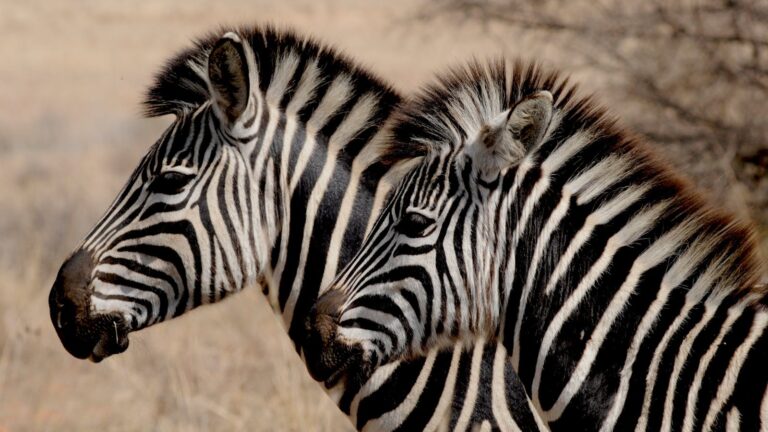Have you ever wondered why zebras sport those iconic black and white stripes? These distinctive markings have fascinated scientists and nature enthusiasts for centuries. In this article, we’ll dive deep into the captivating world of zebra stripes patterns and explore their role in nature’s clever camouflage design.
The Art of Blending In
Zebras, with their bold stripes, might seem easy to spot. But in their natural habitat, these patterns serve a crucial purpose. The alternating black and white lines create an optical illusion that confuses predators. This phenomenon, known as “dazzle camouflage,” makes it challenging for lions and other hunters to single out individual zebras from the herd.
Zebra Biology: More Than Meets the Eye
When we delve into Zebra Biology, we discover that stripes play multiple roles. Besides camouflage, these patterns help regulate body temperature. The black stripes absorb heat, while the white ones reflect it. This clever design allows zebras to stay cool in the scorching African savanna.
Did you know…
Zebras’ stripes are as unique as human fingerprints? No two zebras have identical patterns, making each animal truly one-of-a-kind!
The Science Behind the Stripes
Recent studies have shed light on another fascinating aspect of zebra stripes. Researchers found that the pattern might deter insects, particularly disease-carrying flies. The stripes create an optical illusion that confuses the insects’ visual systems, making it harder for them to land on the zebras.
Stripes in Motion

When zebras run, their stripes create a mesmerizing motion blur. This effect, combined with the movement of the herd, makes it incredibly difficult for predators to focus on a single target. Nature has truly outdone itself with this ingenious defense mechanism.
Zebras in the Ecosystem
The role of zebras extends beyond their striking appearance. These animals play a crucial part in maintaining the balance of their ecosystems. Their grazing habits help shape the landscape, promoting biodiversity in African grasslands.
Preserving Nature’s Masterpiece
As we unravel the mysteries of zebra stripes, it becomes clear how vital these animals are to their habitats. Conservation efforts are essential to protect these magnificent creatures and the ecosystems they inhabit. By supporting wildlife preservation, we can ensure future generations will continue to marvel at nature’s unique designs.
The Future of Zebra Research
Scientists continue to study zebra stripes, hoping to unlock even more secrets. Their findings could have far-reaching implications, potentially inspiring new camouflage technologies or pest control methods. The humble zebra might hold the key to groundbreaking innovations.
Conclusion: Nature’s Ingenious Design
Zebra stripes are a testament to nature’s creativity and efficiency. These patterns serve multiple purposes, from camouflage to temperature regulation and pest control. As we continue to learn about these fascinating animals, we’re reminded of the intricate beauty of the natural world.
The next time you see a zebra, take a moment to appreciate those striking stripes. They’re not just for show – they’re a masterpiece of evolutionary design, helping these animals thrive in challenging environments. Nature’s creativity never ceases to amaze, and zebras are living proof of its ingenuity.

